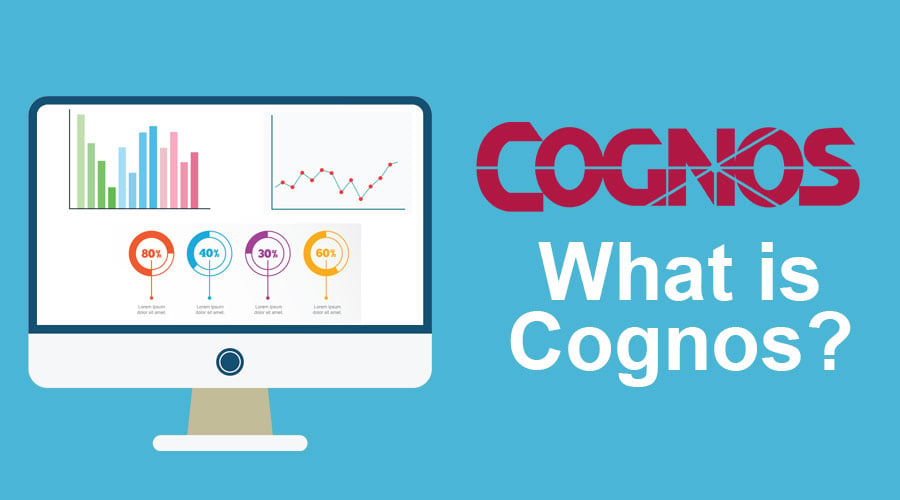What is Cognos?
Cognos is a business intelligence performance management tools for IBM that allows technical and non-technical employees in any company to analyse, extract and create interactive dashboards that enable the company to take relevant key decisions. The Cognos tool combines a multitude of products which enables communication with different third parties. For example, SAPs, relational databases etc. Cognos is an intelligence-gathering platform for business that provides an analytical solution for business needs that is scalable and self-service. The highly interactive nature makes it a good way of creating user-friendly dashboards and reports for every company.
Understanding Cognos
Initially started as a consulting company in 1969 by Alan Rushforth and Peter Glenister, Cognos moved to software sales later on. On January 31, 2008, IBM acquired Cognos and maintained its software suite legacy.
It is a powerful business intelligence tool that is used for data mining, analysis of the data, event monitoring, and metric selection for visualization. For any business to stay ahead in the market, it gives them a powerful analytics medium to predict market trends and take appropriate actions beforehand.
How Cognos does make working so easy?
It is a business intelligence tool that allows the creation of interactive dashboards to make informed business decisions as it can predict the changes in the market beforehand. Nowadays, almost every company uses Cognos for their analytical tasks as taking key business decisions at the right time is necessary to survive in this every challenging market.
Cognos has certainly made working easy for enterprises and organizations, and here are some of the ways how it does so.
- It is powered by Artificial Intelligence and Machine Learning, which enables it to make future predictions and create intelligent dashboards.
- It uses pattern detection property to discover hidden patterns in the data that otherwise could be unheard or expected in normal circumstances.
- One of Cognos’s key features is its ability to create interactive dashboards in multiple formats catering to business needs. It enables the stakeholders to analyze the charts the way they would want and helps in the decision making process.
- Natural Language processing is the way to extract information from raw text and make intelligent predictions. Cognos using natural-language powered AI, which assists the users to get intelligent responses to the questions posed by them.
- Manual tasks require time and effort. Cognos eliminates manual intervention by automating the data-preparation process through its built-in intelligence system.
What can you do with Cognos?
Cognos allows the creation of intelligent interactive dashboards to make informed business decisions. Its system is Machine Learning and AI-enabled, which automates data creation and analysis and enables users to get relevant answers to their questions.
Working with Cognos
Cognos allows making interactive dashboards for the business to make intelligent decisions. Some of its basic components are –
- The Query Studio is used to write simple queries and answer business questions through the service reports.
- Next is the Cognos Connection, which ensures that the suite consists of all the functions.
- The charts, graphs, and lists required by the management are prepared using the Report Studio.
- In order to notify about the real-time enterprise events, the Event Studio is used.
- The Analysis Studio, which consists of the OLAP operations, helps in analyzing the trends, events, detect anomalies, and so on.
Advantages of Cognos
Cognos is the go-to tool for any business to make key business decisions. There are several advantages are as follows:
Data Preparation
Files of different formats like CSV, spreadsheets could easily be accessed and uploaded. It also helps find the relevant data sources with the help of its intelligent system that uses Natural Language and automates the process of a combination of different data sources.
Data Exploration
The data could be visualized and reported in a professional manner through Cognos. Additionally, its intelligent features allow plotting the correct chart for a particular business problem. Moreover, the geospatial features are also embedded in the dashboard.
Data Sharing
Once the data is prepared and explored, it could be shared over different platforms or in a cloud. It also enables users to report subscriptions, and different charts could be combined to create a story using various features like voiceovers, overlays, etc.
Required Cognos Skills
Cognos is a tool, and thus there are no technical pre-requisites to master it. However, one must possess proper data intuition and understand the data well enough to ensure correct data is being used to make business decisions.
Why should we use Cognos?
Cognos should be used to make interactive intelligent dashboards, automate the process of data preparation, and analyze the data by plotting the correct chart for a particular business problem.
Scope
It has a huge scope in the analytical eco-space, and it depends and its scope depends on the scalability of its usage. It has three options –
- The Trial Version of the Premium edition.
- The Premium edition, which has the full capabilities of Cognos.
- The Enterprise edition, which is mostly used in big industries, meets their needs in a particular environment.
Why do we need Cognos?
Any enterprise or an individual needs Cognos to automate the Data analysis and visualization task. It also helps in predicting the future trends, which could ensure in taking a key business decision.
Who is the right audience for learning Cognos technologies?
Anyone interested in data visualization to make intelligent decisions should learn Cognos as it is easy to use and provides many features based on the needs.
How would this technology help you in career growth?
It would open the doors for any professional in the analytical space as Cognos is an important tool to learn because of its multiple usage and acceptance by different organizations.
Recommended Articles
This has been a guide to What is Cognos. Here we discussed the Understanding, Career growth, Skills, and Advantages of the Cognos. You can also go through our other suggested articles to learn more –



